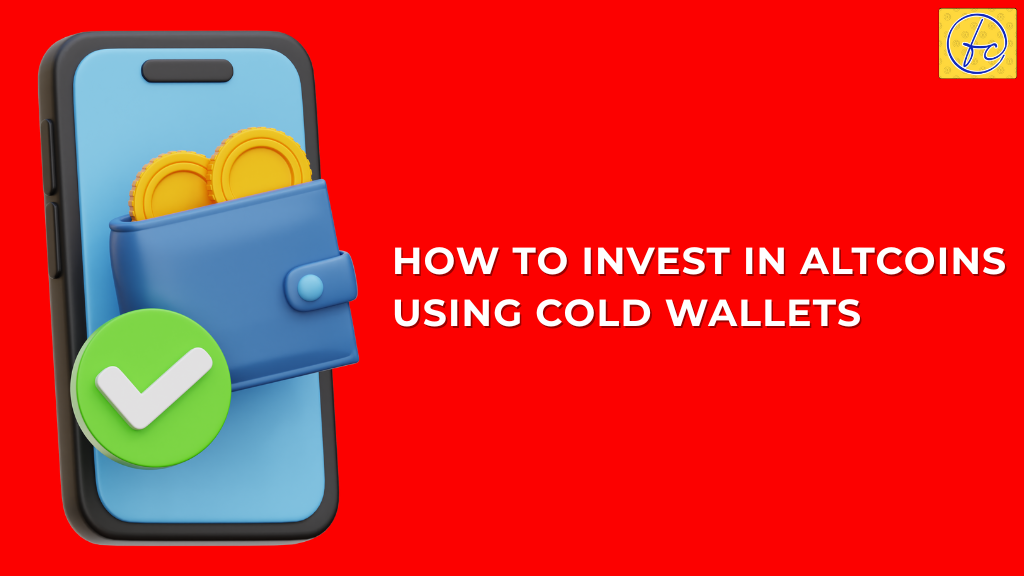
Have you ever wondered how crypto investors keep their altcoins safe from hackers and scams? The answer is simple: they invest in altcoins using cold wallets. But how exactly does that work? And is it really safe?
In this guide, we’ll uncover 7 eye-opening truths about how to store and manage your altcoins securely using cold wallets—even if you’re a complete beginner. Stick around, because Truth #5 might just change the way you handle crypto forever.
What Does It Mean to Invest in Altcoins Using Cold Wallets?
To put it simply, investing in altcoins using cold wallets means storing your cryptocurrency investments offline—away from internet access—for maximum security.
Altcoins (alternative coins) include everything other than Bitcoin: Ethereum, Solana, Cardano, Avalanche, Polygon, and thousands more.
A cold wallet is a hardware device (like a USB stick) or paper wallet that stores your crypto private keys offline, protecting them from hacks, malware, and phishing attacks that online wallets are vulnerable to.
Why Should You Use a Cold Wallet to Store Altcoins?
Using cold wallets is the gold standard of crypto security. Here’s why:
- Hacker-proof: Not connected to the internet means no remote access
- Peace of mind: You control your keys, not a third-party exchange
- Long-term storage: Ideal for HODLing altcoins for months or years
Imagine buying $1,000 worth of Solana and keeping it on an exchange… only for the exchange to get hacked. Now imagine that same $1,000 safely stored on your cold wallet in your drawer.
What Are the Different Types of Cold Wallets?
Let’s break them down with examples.
1. Hardware Wallets (Most Popular)
These are physical devices like:
- Ledger Nano X
- Trezor Model T
- SafePal S1
They let you send and receive altcoins without exposing your private keys online.
Example: Rahul buys $500 worth of Cardano and transfers it to his Ledger Nano X. Even if his PC is infected with malware, his ADA is safe.
2. Paper Wallets (Old-School Style)
You generate your wallet address and private key offline and print it on paper.
- No device required
- Extremely secure if handled correctly
Warning: Lose the paper and you lose the coins. Not beginner-friendly.
3. Air-Gapped Devices
These are custom offline computers or phones disconnected from the internet. Used by high-net-worth investors or institutions.
How to Buy and Transfer Altcoins to Your Cold Wallet – Step-by-Step
Step 1: Buy Altcoins from a Trusted Exchange
Use platforms like:
- Coinbase
- Binance
- Kraken
- CoinDCX (for India)
Step 2: Set Up Your Cold Wallet
- Initialize your device (e.g., Ledger or Trezor)
- Write down your recovery phrase on paper and never share it
Step 3: Generate Wallet Address
- Choose the altcoin you want to store
- Generate a receive address on your cold wallet
Step 4: Transfer from Exchange to Cold Wallet
- Go to your exchange wallet
- Paste the receive address
- Send the coins
Pro Tip: Send a small amount first to test. If successful, send the rest.
What Should You Consider Before Investing in Altcoins Using Cold Wallets?
1. Compatibility
Not all wallets support every altcoin. Check whether your device supports:
- ERC-20 tokens
- Solana, Polkadot, etc.
2. Backup and Recovery
If your device is lost or damaged, your recovery phrase is the only way to get your coins back.
3. Ownership Responsibility
There’s no “forgot password” option. If you lose your private key, it’s gone forever.
How to Keep Your Cold Wallet Safe
- Store it in a fireproof safe
- Don’t connect it to public computers
- Backup your seed phrase and store it in 2 secure locations
Can You Still Stake Altcoins Using Cold Wallets?
Yes—but with some limitations.
Certain wallets and altcoins allow offline staking:
- Ethereum (via services like Lido or Rocket Pool)
- Cardano (delegation through Daedalus + hardware wallet)
- Polkadot and Tezos
Note: You’ll still need to interact with the network through a secure interface, but the private key never leaves the cold wallet.
Are There Any Risks to Using Cold Wallets?
Nothing is 100% safe, and cold wallets come with:
- Physical damage risk
- Theft or misplacement
- Recovery phrase loss
Pro Tips for First-Time Investors
- Use two wallets: one for storage, one for trading
- Always triple-check wallet addresses
- Never type your recovery phrase into any app or website
FAQs About How to Invest in Altcoins Using Cold Wallets
Can I buy altcoins directly into a cold wallet?
No. First, buy on an exchange, then transfer to your cold wallet.
What happens if I lose my cold wallet?
You can recover your funds using your recovery phrase on a new wallet.
Do cold wallets support all altcoins?
Not all. Check the manufacturer’s website to confirm compatibility.
Is a cold wallet the same as a hardware wallet?
A hardware wallet is a type of cold wallet. Others include paper wallets and air-gapped setups.
How much does a cold wallet cost?
Between $60–$250 depending on the brand and features.
Final Thoughts: Should You Really Invest in Altcoins Using Cold Wallets?
Absolutely—if you’re serious about crypto investing.
A cold wallet is like a personal bank vault for your altcoins. If you’re investing more than a few hundred dollars, there’s no reason to leave it exposed online.
With this guide, you’re now equipped to buy, store, and manage altcoins safely and smartly. Be the investor who’s prepared, not the one who regrets.
DISCLAIMER
The views, thoughts, and opinions expressed in this article belong solely to the author, and should not be taken as investment advice. Do your own research before taking any investment decisions.

